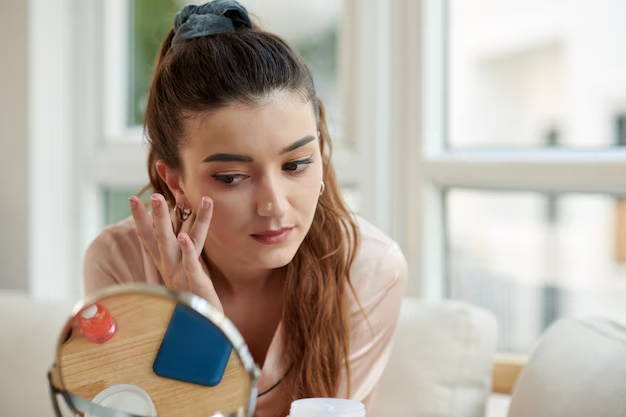Understanding Rosacea: What You Need to Know About This Common Skin Condition
Have you noticed a persistent redness on your cheeks that creates an appearance more than just a blush? Or perhaps you've experienced flare-ups of small bumps on your skin that often get mistaken for acne. If so, you might be dealing with rosacea, a chronic skin condition that affects millions worldwide. Though common, rosacea is often misunderstood, leading to both frustration and self-consciousness among those who have it. In this article, we’ll explore what rosacea is, its potential triggers, symptoms, and ways you can manage its impact on your skin.
What Is Rosacea?
Rosacea is a chronic inflammatory skin condition characterized by facial redness, visible blood vessels, and sometimes pimple-like bumps. These symptoms tend to appear on the central part of the face, primarily affecting the cheeks, nose, forehead, and chin. Though anyone can develop rosacea, it is most commonly observed in middle-aged women with fair skin. It's important to note that rosacea is not contagious and does not result from poor hygiene.
Common Symptoms
- Persistent facial redness: Often resembling a sunburn, this is the most recognized sign.
- Flushing: An increased tendency to blush or become ruddy.
- Visible blood vessels: Fine red lines caused by dilated blood vessels.
- Bumps and pimples: Sometimes, red, swollen bumps that resemble acne appear.
- Eye irritation: Known as ocular rosacea, this can cause red, inflamed eyelids and bloodshot eyes.
What Causes Rosacea?
The exact cause of rosacea remains unknown, but it is believed to result from a combination of hereditary and environmental factors. Some possible contributors include:
- Genetics: A family history of rosacea is often present.
- Immune system abnormalities: An overactive immune response can contribute to skin inflammation.
- Environmental factors: Sun exposure, wind, or cold can aggravate symptoms.
Potential Triggers
Understanding your personal triggers can significantly help in managing rosacea. Here are some common culprits:
Spicy Foods and Alcohol: Consuming hot foods or beverages and alcoholic drinks like red wine may trigger a rosacea flare-up.
Temperature Changes: Extreme heat or cold, as well as hot baths or saunas, can exacerbate symptoms.
Stress and Anxiety: Emotional stress can lead to an increased incidence of flushing.
Sun Exposure: UV light is a well-known trigger and can worsen symptoms.
Certain Cosmetics and Skincare Products: Products with alcohol, menthol, or fragrances should be used cautiously.
Diagnosing Rosacea
Rosacea is typically diagnosed through a comprehensive skin examination by a dermatologist. They will inspect your skin and inquire about your symptoms and medical history. Although there isn’t a specific test for rosacea, dermatologists rely on observing the characteristic patterns of the condition and ruling out other skin disorders to make a diagnosis.
H3: Importance of Early Diagnosis
Getting an early diagnosis can help manage symptoms more effectively, potentially reducing the risk of more severe facial changes, such as rhinophyma (a condition where the nose appears bulbous due to thickening skin). It also opens the door to treatment options that can substantially improve quality of life.
Managing Rosacea: Practical Tips and Tricks
Although there is no cure for rosacea, its symptoms can be managed with a combination of lifestyle changes, skincare strategies, and medications tailored to individual circumstances.
Skincare Practices
- Gentle Cleansing: Use mild, non-abrasive cleansers that rinse away easily. Hot water or rough facecloths should be avoided.
- Moisturizing: Choose fragrance-free, non-irritating moisturizers to help maintain skin barriers.
- Sun Protection: Use a broad-spectrum sunscreen with an SPF of 30 or higher every day.
Lifestyle Adjustments
- Dietary Habits: Minimize or avoid identified food and drink triggers.
- Stress Management: Engage in stress-reducing practices like yoga or meditation.
- Weather Precautions: Protect your face with scarves in cold weather, and avoid excessive sun exposure.
Medical Treatment Options
While lifestyle changes can significantly help manage rosacea, some individuals might require more targeted treatments to control symptoms. Always discuss any potential treatment options with a healthcare provider.
- Topical Treatments: Creams and gels that reduce redness and inflammation.
- Oral Medications: Antibiotics or specialized medications can help manage swelling and redness.
- Light Therapy: Laser or intense pulsed light (IPL) therapy to reduce visible blood vessels and redness.
Living with Rosacea: Community and Support
Living with a chronic condition like rosacea can be emotionally challenging, affecting self-esteem and social interactions. Seeking support from both personal networks and larger rosacea communities can provide comfort and guidance. Online forums and support groups offer shared experiences and coping strategies that can be particularly helpful for those navigating similar challenges.
Building a Support Network
- Share Your Story: Talking about your rosacea with friends and family can foster understanding and support.
- Seek Professional Help: Consulting with dermatologists or counselors can help manage both physical symptoms and emotional well-being.
- Join Communities: Online rosacea forums and local support groups offer a sense of community and shared advice.
Bringing it All Together
Understanding rosacea allows you to take proactive steps toward managing its effects on your life. By recognizing symptoms, identifying triggers, and exploring both self-care tactics and medical options, you can effectively manage this common skin condition. Remember, while rosacea may not have a one-size-fits-all cure, a personal understanding of your condition combined with supportive care can significantly enhance your quality of life.
🔍 Quick Rosacea Takeaways:
- Symptoms: Redness, flushing, visible blood vessels, bumps, eye irritation.
- Common Triggers: Spicy foods, alcohol, sun exposure, stress, temperature changes.
- Daily Care: Use gentle skincare products and sunscreen; avoid triggers when possible.
- Treatment Options: Topical creams, oral medications, light therapy.
- Lifestyle: Incorporate stress-reduction techniques and protective measures against weather influences.
- Community Support: Sharing experiences and seeking advice from others can make coping easier.
Stay informed and proactive – your skin’s health is an important part of your overall well-being! 🌟
